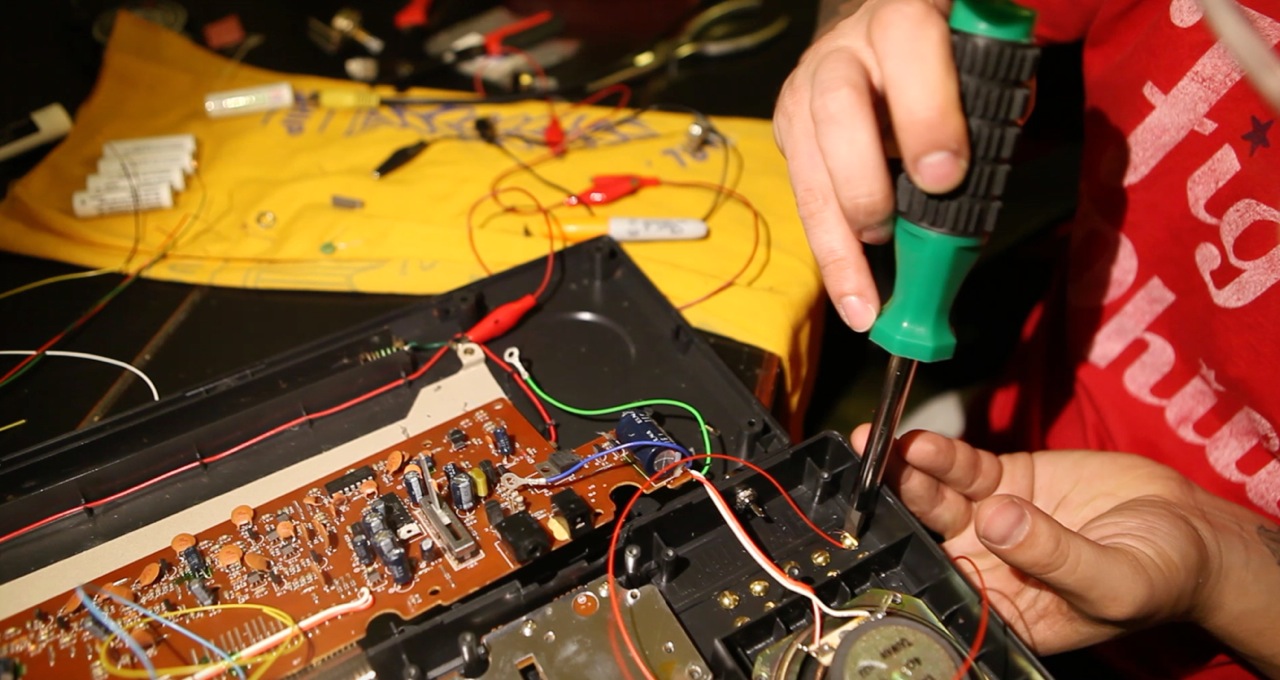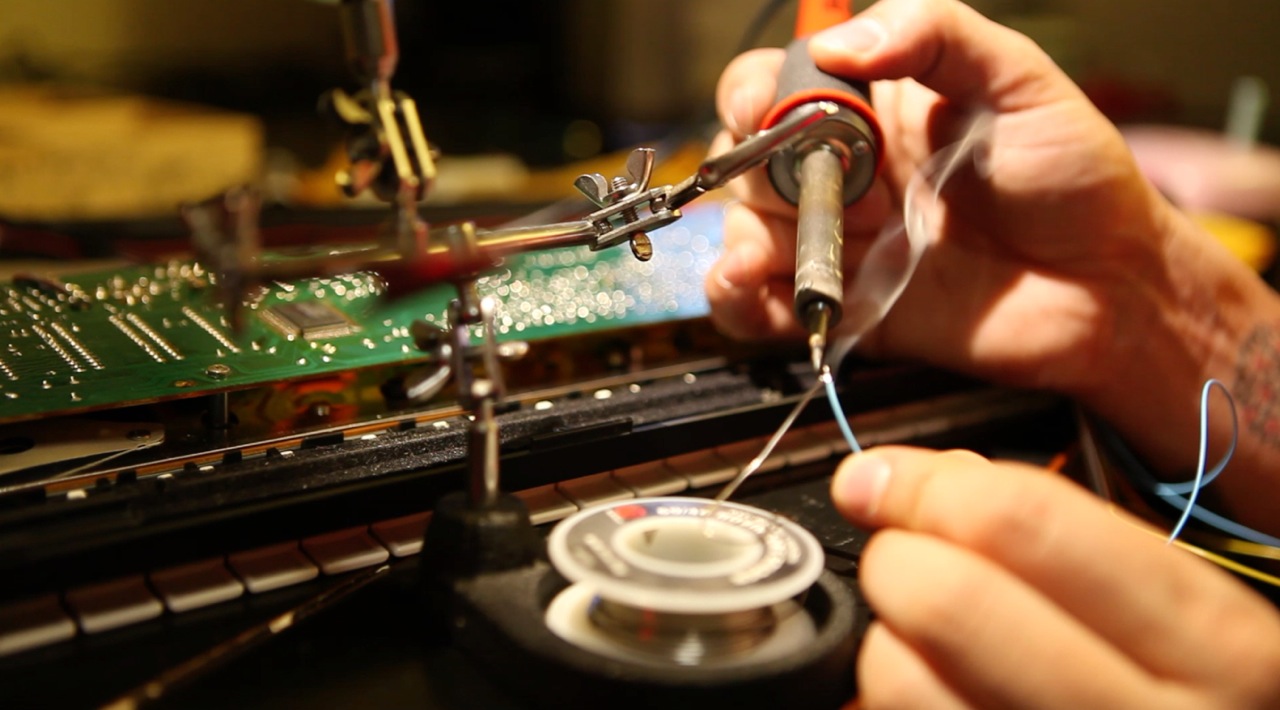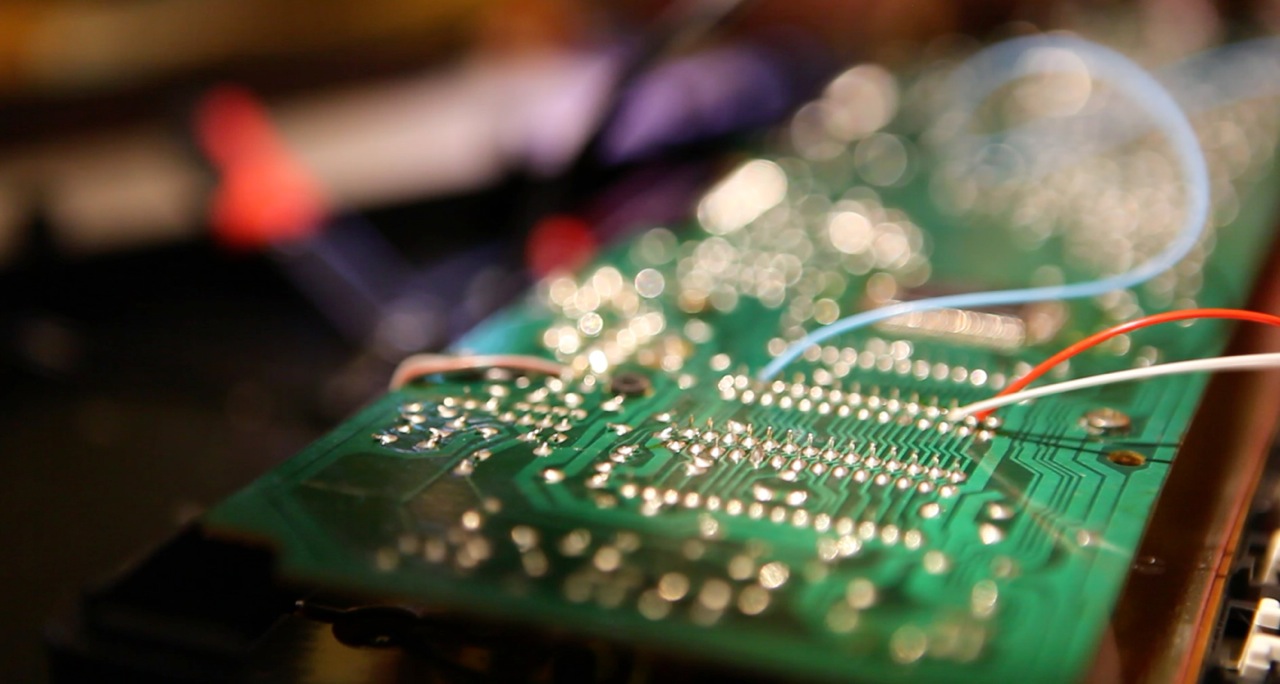Crafting Malfunction: Rhetoric and Circuit-Bending
Steven Hammer and Aimée Knight
Circuit-bending, an art practice developed in the 1960’s, involves the creative short circuiting of battery-powered toys and instruments. Like many of its avant-garde precursors, circuit-bending is a composition practice that values access, chance, and indeterminacy. For this special issue of Harlot, we document our own circuit-bending process and make connections between the work of Qubais Reed Ghazala, the pioneer of circuit-bending, and rhetoric and writing. Specifically, we discuss the importance of access and creativity, invention and discovery, and the ways that composition is a collaborative performance between humans and nonhumans.
One evening last fall, we sat down to explore how the notion of craft rhetorics intersects with the theory and practice of circuit-bending. Working in a Communication Studies department that values experiential learning, we were looking for ways to help students explore certain theoretical concepts through hands-on practice. At the forefront of our thinking was the observation that our students are sometimes afraid of making mistakes or taking chances.
From writing copy for the web to writing code, there can sometimes be too much focus on rhetorical moves or strict standards, like the right way, for example, of following strict usability conventions or standard coding practices. As two individuals who want to encourage invention and creativity in the classroom, we embraced circuit-bending’s indeterminate aesthetics of malfunction, where there are no rules to creation, no strict canon to invention. What is created is largely unknown—crafted wholly by sense and intuition.

To this end, we took an old Casio SK-1 from the 1980s and an assortment of tools, including some telephone wire, a soldering iron, a potentiometer and some RCA jacks, and got to work. We documented the process using a Canon 5D and a Barbie Wireless Video Camera. After video documenting the circuit-bending event, we composed this piece as a screencast as a way of practicing technological transparency.
Just as circuit-bending is a process-based craft that avoids the construction of and on composition technologies that obscure their own production, we chose to write with video in a way that makes our process, our technological coauthors, and our resources transparent.

In many ways, we wanted to simply introduce folks to circuit-bending as one of many composition practices that embraces chance, noise, invention, and play. We were also intrigued by how a circuit-bender shares creative control with the tool/object at hand. Composing with and through an object complicates authorial intent as it is encoded in the work. After all, there is a long history of such practices (Oulipo, Zaum, Dada, Fluxus, Futurism, Glitch, Dirty New Media, etc…), and many writers and scholars have undertaken these movements and applied their principles pedagogically (Sirc’s College Composition as a Happening, most notably).
For those interested in learning more—or even trying circuit-bending for themselves—here are a few resources:
- Pete Edwards, aka Casper Electronics: Circuit-Bending Tutorial
- Reed Ghazala: How to Circuit Bend
- Circuitbenders.co.uk Community: Circuitbending Tips
- Circuitbending SubReddit
As you will probably find, circuit-bending can be both an independent practice of exploration and discovery and a community-based practice in which documentation, sharing, and education are common practices. While formal events (e.g., Bent Fest 2007-2009) and informal events (performances, workshops) exist, most community activity occurs online in the form of video documentation, featuring demonstrations of instruments and documentation of where “bends” might be located on specific circuit boards.

There is evidence that circuit-bending is a craft practice in decline. Circuit-bending could simply be a short-lived avant-garde practice like many of its predecessors. There is, however, also a material/economic aspect of its decline. The most popular objects for circuit-bending were manufactured in the 1970s–1990s, a time in which sampling technology was limited and expensive, leading manufacturers to use digital sound synthesis technologies. Newer technologies, however—toys and keyboards you can purchase new in 2015, for instance—make use of now-abundant memory and simply store samples for quick recall. As such, the toys and keyboards once in abundance at garage sales and thrift stores are dwindling, and the cost of these instruments on sites like Ebay have risen. The Casio SK-1, for example, currently sells for $30–$60 on Ebay.
Regardless of the longevity of circuit-bending as a practice, however, it remains both valuable and transferable to our own ways of making, writing, and composing. Rule-based systems are increasingly prevalent in our composing lives. By inviting some malfunction into our teaching and learning practices, we craft a different relationship to both our systems and our technologies.
Steven Hammer is an Assistant Professor of Communication and Digital Media at Saint Joseph’s University, where he researches and teaches courses in multimedia production, digital media studies, and sonic rhetorics. He is also a sound/video artist, collector of forgotten technologies, and live music enthusiast.
Aimée Knight is an assistant professor in the Communication Studies Department at Saint Joseph’s University. Her research centers on multimodal composition, digital storytelling and new (and not so new) aesthetics.